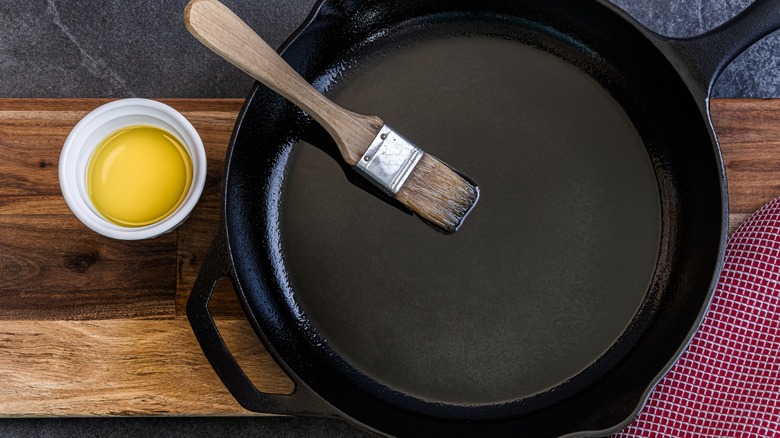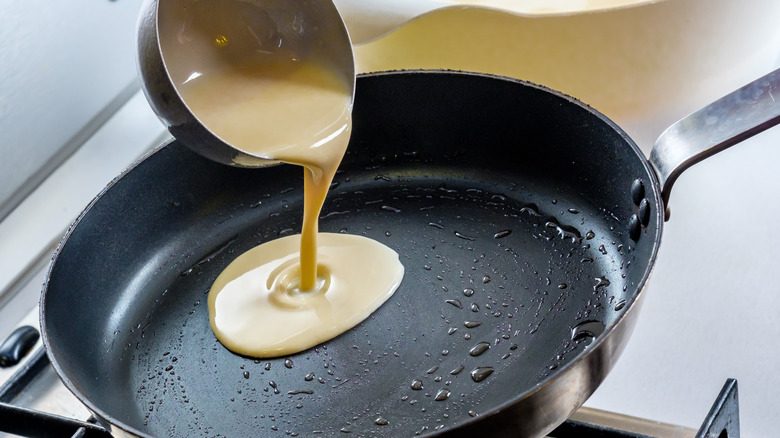The Best Way To Oil Your Skillet For Restaurant-Worthy Pancakes
The pancakes that you order at a restaurant always seem picture perfect. Their smooth, brown surface can look a lot different than the pancakes you make at home, which might have uneven coloring. Even if your homemade pancakes already taste delicious and you already know all of the tricks for fluffy pancakes, you may still want to up your presentation game, especially if you're planning on serving them at a brunch or gathering. Luckily, there's a trick to get that evenly browned surface, and it all comes down to how you oil your skillet.
To ensure proper application of the oil, place a small amount on the nonstick skillet or griddle, then wait for the skilet to heat up. You'll know it's reached the right temperature when it starts to shimmer in appearance. Next, wipe that oil off. This will leave just enough oil on the surface for you to cook the pancakes.
The reason that you want just a thin layer of oil is because too much oil interferes with the cooking process. Excess oil may pool up underneath the pancake, leaving areas that won't brown. It's important for the pan itself to have contact with the pancake for it to cook evenly.
How to get perfectly round pancakes
Now that we know how to get the perfect coloring on homemade pancakes, there are more details to tackle to make sure that your pancakes look like they were ordered at a restaurant. It's important to not overcrowd your pan by trying to make too many pancakes at once. The batter needs room to spread out. Depending on the size of your pan, you may want to stick to cooking just one or two pancakes at a time. While this may take longer, it will help with the appearance of your pancakes. For uniform size, one great option is to use a ring mold for your pancakes. It's a guaranteed way to get that round shape with very little effort on your part.
However, if you don't have a ring mold, you'll want to choose the utensil you'll use to transfer the batter to the pan based on the thickness of the batter. For a thinner batter — typically when a recipe calls for less flour than liquid — use a measuring cup or a ladle. For a thicker batter — when a recipe calls for equal parts flour and liquid — use an ice cream scoop. The thicker batter is harder to transfer into the pan, so the ice cream scoop (and its easy-release function) will help get the batter onto the pan in a nice shape. With these tips, your guests will feel like they have stepped into a restaurant while enjoying your pancakes.

